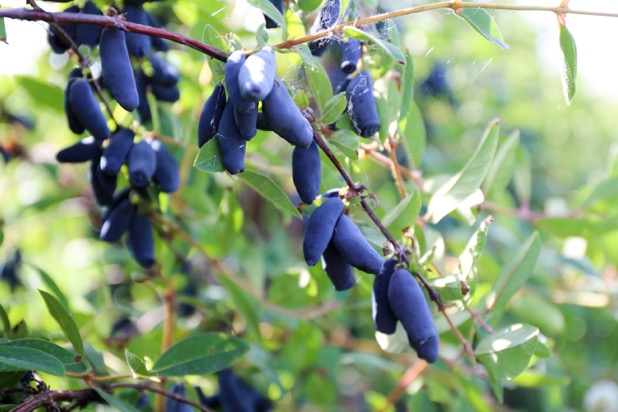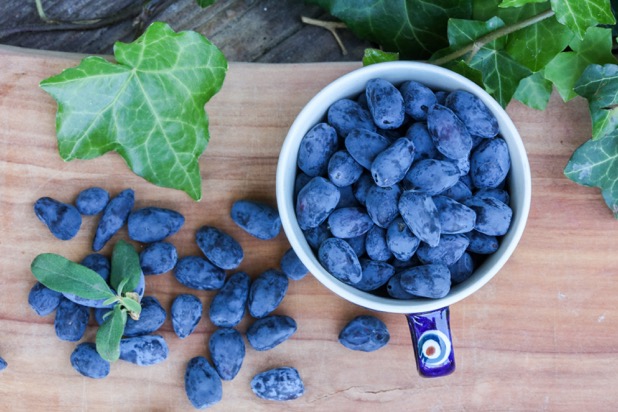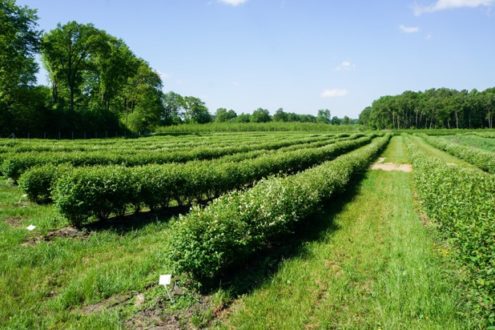Oct 16, 2019Haskap seen by some as the fruit of the future
Although haskap (honeysuckle) is a relatively new fruit on the market, it turns out to have good prospects. This is mainly due to the properties of these berries which are rich in phenolic compounds, anthocyanins and Iridoids whicg are very rare in the world of plants. That is why haskap has unique health benefits. The development of cultivating this specie in such countries as Poland, makes it necessary to think about how to best use haskap fruit.
Idea for haskap
Many producers ask the question: What should I do with the collected fruit, where to sell them? The answers to this question should be answered by consumers themselves. It is not difficult to produce fruit today but you need to have a global idea on what to do with it, in what form is it possible and profitable to offer it to the end customers. The best strategy that works among American farmers is to start growing haskap on small areas and introduce these rather new and not well known berries to consumers. A good way of doing so may be, for example, inviting them to the plantation where they may harvest their fruit (Pick Your Own). Such model grants the consumer an opportunity to fully explore the fruit and benefits of its consumption.
“I have the impression that farmers in Europe have set up large haskap plantations too quickly, with no plan for what to do with collected fruit. Haskap is in my opinion the tastiest and healthiest secret in the world. We have already discovered it and now we must show it to consumers, said Logi

“In my opinion, haskap fruit is a very interesting but still poorly understood product with multiple uses. The juices and jams that our farm currently offers are, in fact, just the first step on a long road that we still have to travel if we want to talk about true market success of haskap,” said Anna Litwin from the Polish company Blue Haskap.
From its own fruit and those obtained from other growers, it produces juices and jams under the Blue Haskap brand. This is done in cooperation with certified pressing and processing facility to which Blue Haskap delivers fruit (usually frozen), then pays for the service and collects products after they are ready. Juices are produced in a plant that already has HACCP and BRC certificates. That turned out to be important during sales, because such document allow acquiring foreign customers who have high requirements, but are also able to offer good prices.
“In my opinion, in case of seasonal fruits such as haskap berries, it makes no sense to invest immediately from the start in expensive technologies and solutions for processing fruit,” Litwin said. “There are a lot of companies on the market that you can outsource. Juices and jams are just initial ways of utilizing the fruit. This year I am already conducting freeze-drying of these berries. They can later be sold as an interesting and very healthy addition to muesli or in another way, e.g. after being powdered, in the form of capsules.”
Fruit of the XXI century
Haskap fruit has unique pro-health properties, which set its high potential for use of their valuable bio-ingredients in medicine. The results of numerous studies indicate the antioxidant properties of haskap fruit, also anti-inflammatory, antibacterial and anti-adhesive, which can be important and helpful in the treatment of inflammatory diseases of eyes or gums and also help prevent inflammation of the gastrointestinal tract or urinary tract. Bioactive haskap compounds reduce risk factors for many adverse conditions in human body and can prevent the emergence of civilization diseases.
Until recently, polyphenols, mainly anthocyanins, were pointed out as compounds responsible for a number of valuable biological properties of haskap. Apart from them a completely different structure than polyphenols and belonging to a separate chemical group – iridoids – has been discovered. These compounds occur mainly in green plants and very rarely in fruit. There are only several in which such compounds may be found. They are dogwood, cranberry, lingonberry, noni, olives, and now as research proved also haskap berries. Iridoids and sekoirydoids, like polyphenols, have many valuable biological properties. In addition, dark fruits such as haskap are valued by processors because they can be used as a natural food color.
Production is constantly increasing
There is still a lot to be done. In Poland, where the area of haskap cultivation currently exceeds 2,000 ha, the selection of varieties for first plantations turned out to be not very accurate. Planted varieties such as ‘Wojtek’ and ‘Zojka’ can only be used by the processing industry, but they have no value on the fresh market. Their disadvantage is also poor cropping. In Poland, however, Canadian varieties such as’ Indigo Gem ‘,’ Vostorg ‘and Aurora’ have performed well. Fruit from the two last mentioned varieties may be successfully offered on the fresh market.
The selection of varieties for commercial planting must be well thought out. It is important in case of pollination but also in terms of adopting the right harvesting system and forms of utilizing collected crops. Many Polish growers have already perfected the technique of mechanical harvesting and are successfully implementing it with both full-row and half-row harvesters. The way of running the plantatio

The 3rd International Haskap Conference will be an opportunity to obtain the latest knowledge about haskap cultivation. It will take place in Poland on November 7, 2019, at Hotel Warszawianka (Jachranka). Some of the finest experts and the best lecturers from around the world (Poland, Canada, Germany, Russia, Scotland) will share their knowledge about haskap cultivation and present their views on the future and prospects for this fruit. All information and conference program is available on the website:
http://www.konferencjakamczacka.pl/english-ihc/
Come and take part in the only such event in the whole world.















